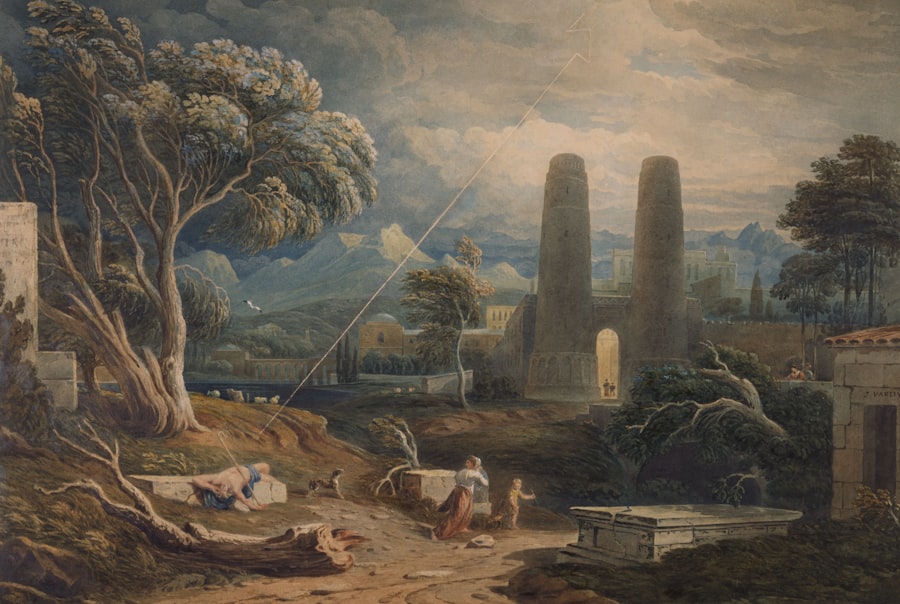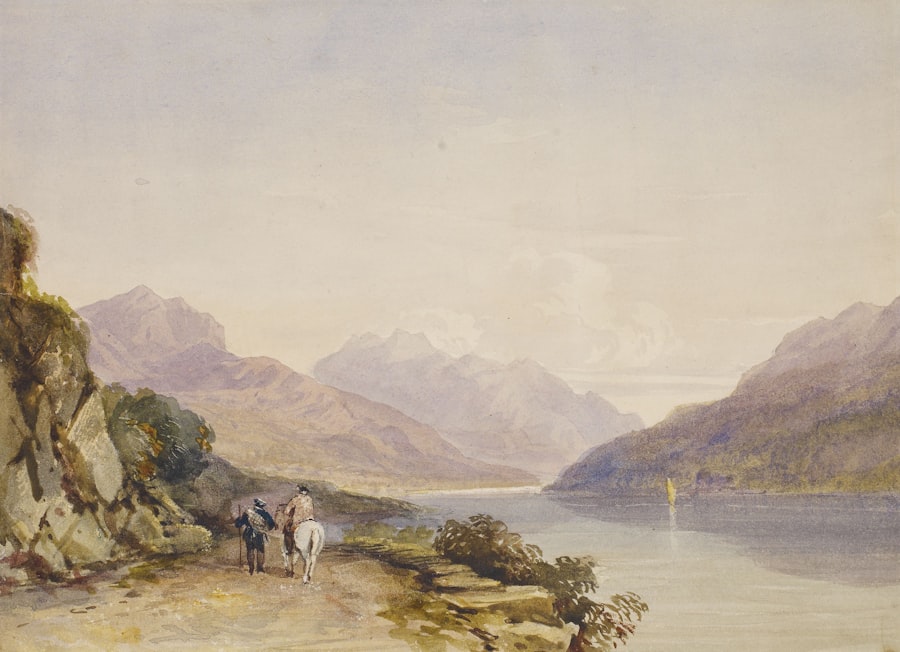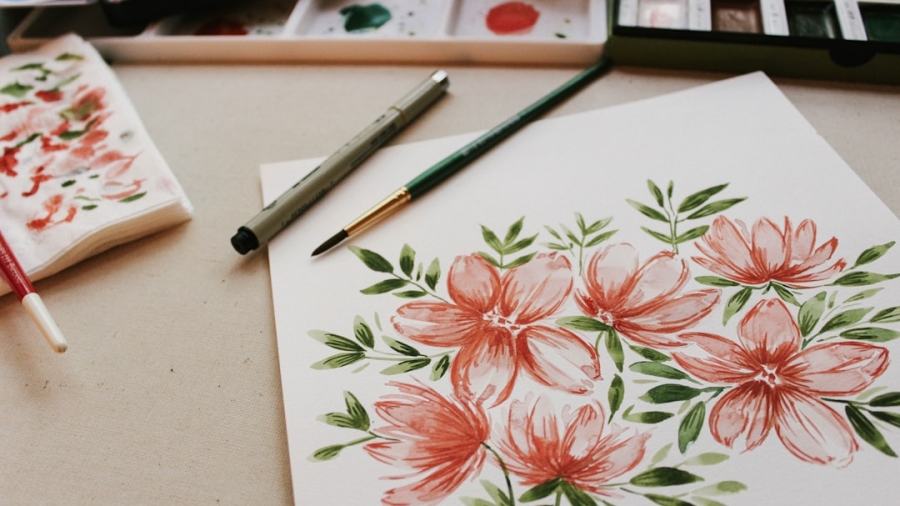The emergence of artificial intelligence (AI) has significantly transformed various sectors, and the creative industries are no exception. Over the past decade, advancements in machine learning, natural language processing, and neural networks have enabled AI to take on roles traditionally reserved for human creators. From generating compelling narratives to composing symphonies, AI has begun to carve out a niche in fields such as literature, music, visual arts, and even film.
This technological evolution has not only expanded the boundaries of creativity but has also sparked a dialogue about the nature of artistic expression itself. As AI tools become more sophisticated, they are increasingly being integrated into creative workflows, allowing artists to explore new dimensions of their craft while also raising questions about authorship and originality. The rise of AI in creative industries is also marked by a growing acceptance among artists and creators who view these technologies as collaborators rather than competitors.
Many professionals are leveraging AI to enhance their creative processes, using algorithms to generate ideas, suggest variations, or even automate repetitive tasks. This symbiotic relationship between human creativity and machine intelligence is fostering an environment where innovation can flourish. As a result, we are witnessing a democratization of creativity, where individuals with limited artistic training can harness AI tools to produce high-quality work.
This shift not only broadens access to creative expression but also challenges traditional notions of what it means to be an artist in the 21st century.
Key Takeaways
- AI is increasingly being used in creative industries, revolutionizing the way art, music, and other forms of creativity are produced and consumed.
- AI is playing a significant role in music composition, with algorithms being used to generate melodies, harmonies, and even entire songs.
- AI-generated art is making waves in the art world, raising questions about the role of human artists and the impact of AI on the creative process.
- Ethical considerations surrounding AI-powered creativity, such as issues of ownership, authenticity, and the potential for bias in AI algorithms, are becoming increasingly important.
- The future of AI in creative fields is promising, with the potential for AI to enhance and expand human creativity in new and unexpected ways.
The Role of AI in Music Composition
AI’s Impact on Music Composition
The integration of Artificial Intelligence (AI) into the music industry has led to a fascinating new era in music composition. By analyzing vast datasets of musical compositions, algorithms can identify patterns and structures that define various genres. This capability enables AI to generate original melodies, harmonies, and even entire compositions that mimic the styles of renowned composers or contemporary artists.
AI-Driven Music Software and Collaboration
The development of AI-driven music software has assisted musicians in brainstorming ideas and overcoming creative blocks. Platforms like OpenAI’s MuseNet and Google’s Magenta project have demonstrated the potential for AI to create intricate musical pieces that resonate with listeners, blurring the lines between human and machine-generated music. This collaboration between human musicians and AI not only enriches the creative process but also opens up new avenues for exploration in sound design and composition.
AI’s Role in Music Production
AI’s influence extends beyond music composition, playing a crucial part in the production process. Tools powered by AI can analyze audio tracks, suggesting enhancements or modifications that improve sound quality and overall production value. This technology allows producers to experiment with different sounds and arrangements without the need for extensive technical knowledge. As a result, musicians can focus more on their artistic vision while relying on AI to handle the technical intricacies of music production.
The Future of Music Creation
The collaboration between human musicians and AI has the potential to revolutionize the music industry. By leveraging AI’s capabilities, musicians can explore new sounds, styles, and genres, pushing the boundaries of music creation. As AI technology continues to evolve, we can expect to see even more innovative applications of AI in music composition and production.
AI-Generated Art and its Impact on the Art World

The advent of AI-generated art has sparked a revolution within the art world, challenging conventional definitions of creativity and authorship. Artists are increasingly utilizing AI algorithms to create visually stunning pieces that push the boundaries of traditional artistic techniques. By feeding algorithms with vast amounts of visual data, artists can generate unique artworks that reflect a blend of styles and influences.
This process often results in pieces that are both innovative and thought-provoking, prompting viewers to reconsider their understanding of what constitutes art. The rise of AI-generated art has led to exhibitions showcasing these works, where audiences are invited to engage with pieces created by machines as well as human artists. The impact of AI-generated art extends beyond aesthetics; it also raises critical questions about ownership and authenticity.
As machines become capable of producing art that rivals human creativity, debates surrounding intellectual property rights have intensified. Who owns an artwork created by an algorithm? Is it the programmer who designed the AI, the artist who provided the input data, or the machine itself?
These questions challenge long-standing notions of authorship and originality in the art world. Additionally, the proliferation of AI-generated art has led to concerns about the devaluation of human artistry, as some fear that reliance on technology may undermine the emotional depth and personal connection often associated with traditional art forms.
Ethical Considerations in AI-Powered Creativity
As AI continues to permeate creative industries, ethical considerations surrounding its use have come to the forefront. One major concern is the potential for bias in AI-generated content. Algorithms are trained on existing datasets, which may contain inherent biases reflecting societal prejudices or stereotypes.
Consequently, AI systems can inadvertently perpetuate these biases in their outputs, leading to artworks or compositions that reinforce harmful narratives. This issue raises important questions about accountability: who is responsible for the consequences of biased AI-generated content? Artists and developers must navigate these ethical dilemmas as they integrate AI into their creative processes.
Another ethical consideration involves the implications of using AI as a tool for creativity. While many view AI as a means to enhance artistic expression, there is a risk that over-reliance on technology could diminish the value placed on human creativity. The commodification of art through automated processes may lead to a homogenization of artistic styles, where unique voices are overshadowed by algorithmically generated trends.
Furthermore, as AI becomes more prevalent in creative fields, there is a growing concern about job displacement for artists and creatives who may find themselves competing against machines capable of producing work at an unprecedented scale and speed. Balancing innovation with ethical responsibility will be crucial as society navigates this evolving landscape.
The Future of AI in Creative Fields
Looking ahead, the future of AI in creative fields appears both promising and complex. As technology continues to advance, we can expect even more sophisticated tools that will further blur the lines between human creativity and machine-generated content. The integration of AI into creative processes is likely to become more seamless, allowing artists to focus on their vision while leveraging technology for inspiration and execution.
This evolution could lead to entirely new genres and forms of artistic expression that we have yet to imagine. The potential for collaboration between humans and machines may unlock unprecedented levels of creativity, enabling artists to explore uncharted territories in their work. However, this future also necessitates ongoing discussions about the implications of AI in creativity.
As we embrace these advancements, it will be essential to establish frameworks that promote ethical practices and protect the integrity of artistic expression. This includes addressing issues related to copyright, ownership, and bias in AI-generated content. Additionally, fostering an environment where human creativity is celebrated alongside technological innovation will be vital in ensuring that artists continue to thrive in an increasingly automated landscape.
The future of AI in creative fields holds immense potential for transformation; however, it will require careful consideration and collaboration among artists, technologists, ethicists, and policymakers.
Challenges and Limitations of AI in Creativity

Limitations of AI in Creative Expression
Despite its impressive capabilities, AI still faces significant challenges and limitations when it comes to creativity. One major hurdle is the lack of true understanding or emotional depth in machine-generated content. While algorithms can analyze patterns and generate outputs based on learned data, they do not possess consciousness or emotional intelligence.
The Absence of Emotional Resonance
This absence means that AI may struggle to capture the nuances of human experience that often inform artistic expression. For instance, while an AI might create a technically proficient piece of music or art, it may lack the emotional resonance that comes from lived experiences or personal narratives—elements that are often central to impactful creative works.
Technical Limitations and the Need for Innovation
Many algorithms rely heavily on existing datasets for training; if these datasets are limited or lack diversity, the resulting outputs may be similarly constrained. This limitation can lead to a lack of originality or innovation in AI-generated content, as machines may simply replicate existing styles rather than forge new paths. Furthermore, the complexity involved in certain creative processes—such as improvisation in music or spontaneity in visual arts—poses challenges for AI systems that operate based on predefined rules or patterns.
Overcoming the Challenges of AI in Creativity
Overcoming these challenges will require ongoing research and development aimed at enhancing the capabilities of AI while ensuring that it complements rather than replaces human creativity.
Human-AI Collaboration in Creative Processes
The concept of human-AI collaboration is emerging as a powerful paradigm within creative industries. Rather than viewing AI as a replacement for human artists, many creators are embracing it as a partner that can enhance their work. This collaborative approach allows artists to leverage the strengths of both human intuition and machine efficiency.
For example, musicians might use AI tools to generate backing tracks or explore new chord progressions while retaining control over melody and lyrics—elements that reflect their unique artistic voice. Similarly, visual artists can employ algorithms to experiment with color palettes or composition layouts while infusing their personal style into the final piece. This collaboration fosters an environment where experimentation thrives; artists can push boundaries without fear of failure since they have access to tools that facilitate rapid iteration and exploration.
Moreover, human-AI partnerships can lead to unexpected outcomes that challenge conventional thinking about creativity. By combining human insight with machine learning capabilities, creators can discover new techniques and approaches that might not have been possible through traditional methods alone. As this collaborative model continues to evolve, it has the potential to redefine artistic practices across various disciplines while enriching the overall creative landscape.
The Debate: Can Machines Truly Be Creative?
The question of whether machines can truly be creative remains a contentious topic among scholars, artists, and technologists alike. On one hand, proponents argue that AI’s ability to generate original content demonstrates a form of creativity distinct from human expression. They point out that machines can produce works that are aesthetically pleasing or conceptually intriguing without direct human intervention—suggesting that creativity may not be solely tied to consciousness or emotional experience.
In this view, creativity is seen as a process that can be replicated through algorithms capable of learning from vast datasets and generating novel outputs based on learned patterns. Conversely, critics contend that true creativity encompasses more than mere output; it involves emotional depth, personal experience, and cultural context—qualities that machines inherently lack. They argue that while AI can mimic certain aspects of creativity by producing works based on existing styles or trends, it cannot replicate the profound connections humans forge through their art.
This perspective emphasizes the importance of intention behind creative acts—something machines cannot possess since they operate based on programmed instructions rather than intrinsic motivation or emotional understanding. Ultimately, this debate raises fundamental questions about the nature of creativity itself: Is it an exclusive trait reserved for sentient beings, or can it manifest through non-human entities? As technology continues to evolve, this discussion will likely remain at the forefront of conversations surrounding art and innovation in our increasingly automated world.
If you’re intrigued by the concept of AI in creative fields like music and art as discussed in the article “AI-Powered Creativity: Can Machines Write Music and Create Art?”, you might also be interested in exploring how technology is shaping other aspects of our lives. For instance, the integration of technology in retail is revolutionizing shopping experiences. Learn more about this by reading What is BOPIS and How Does It Work?, which delves into the Buy Online, Pick-up In Store model, a strategy that blends online shopping with physical retail.
FAQs
What is AI-powered creativity?
AI-powered creativity refers to the use of artificial intelligence (AI) to generate creative works such as music, art, and literature. This involves using algorithms and machine learning to analyze existing works and create new pieces based on patterns and styles.
Can machines write music?
Yes, machines can write music using AI algorithms. AI-powered music composition tools can analyze existing music to understand patterns and styles, and then generate new compositions based on this analysis.
Can machines create art?
Yes, machines can create art using AI algorithms. AI-powered art generation tools can analyze existing artworks to understand styles and techniques, and then create new pieces based on this analysis.
How does AI-powered creativity work?
AI-powered creativity works by using algorithms and machine learning to analyze large datasets of existing creative works. The AI system learns patterns, styles, and techniques from these works and then uses this knowledge to generate new creative pieces.
What are the benefits of AI-powered creativity?
Some benefits of AI-powered creativity include the ability to generate a large volume of creative works in a short amount of time, the potential to explore new styles and techniques, and the opportunity to collaborate with human creators to enhance their creative process.
What are the limitations of AI-powered creativity?
Limitations of AI-powered creativity include the potential for lack of originality and emotional depth in the generated works, as well as the ethical considerations surrounding the use of AI to create art and music. Additionally, AI may struggle to capture the human experience and emotions in its creations.

